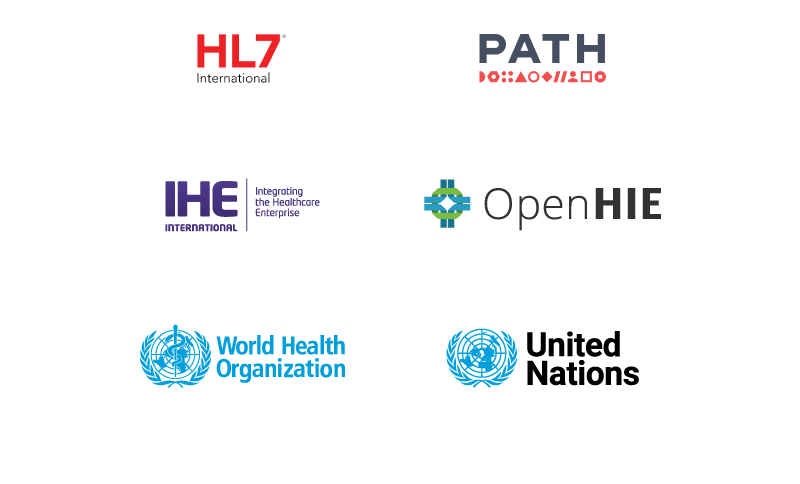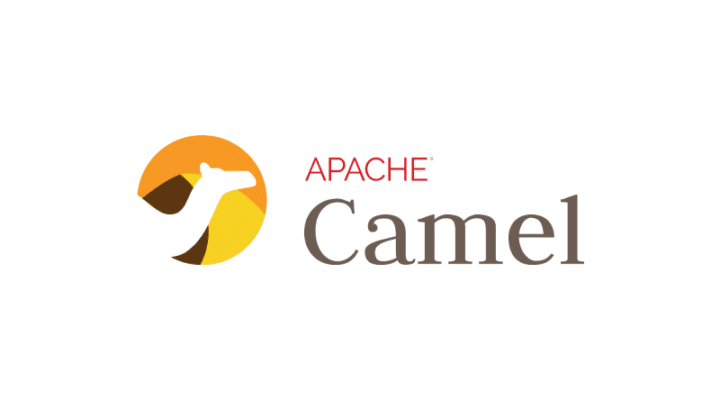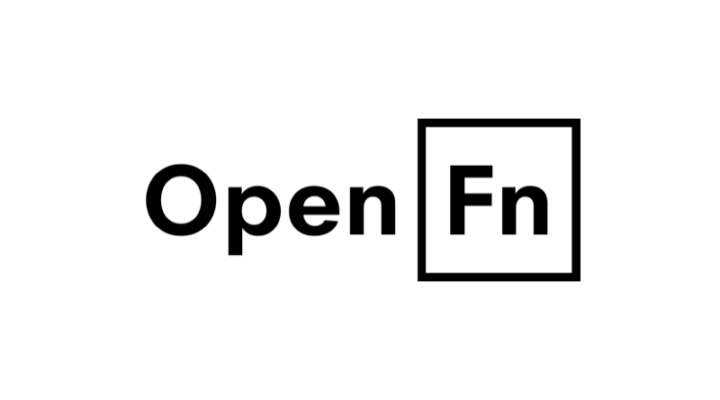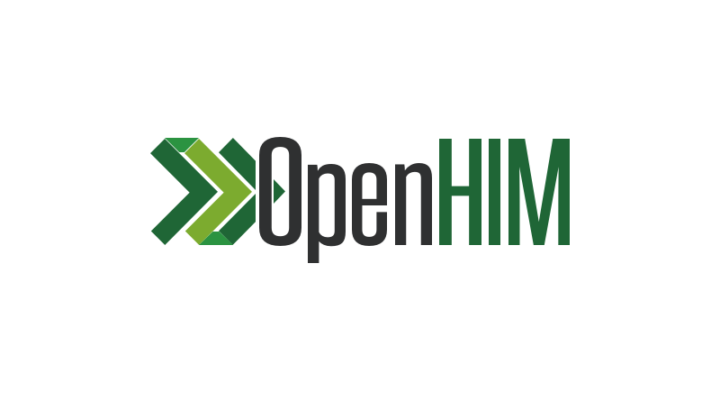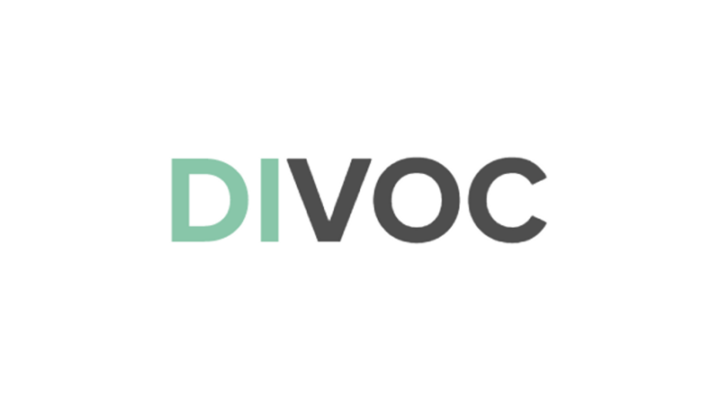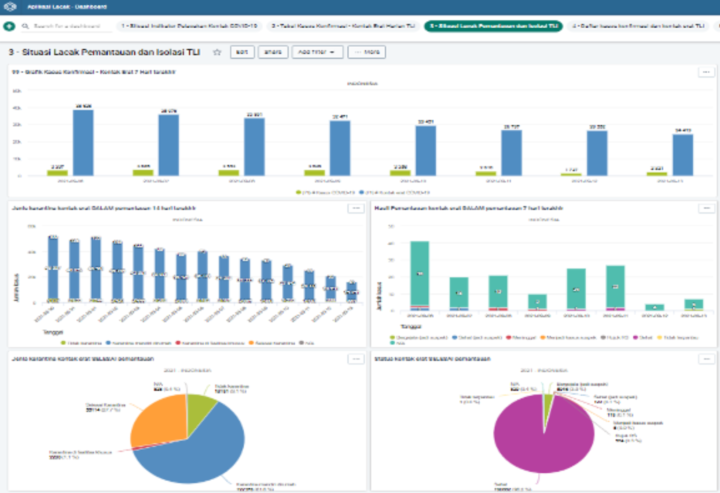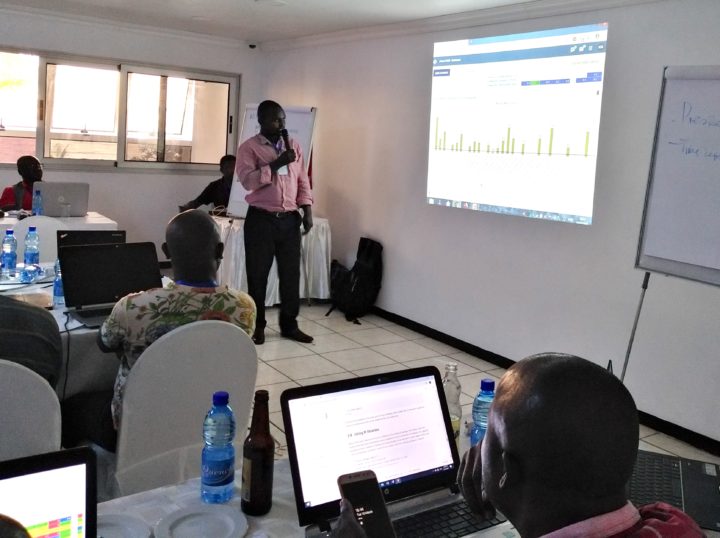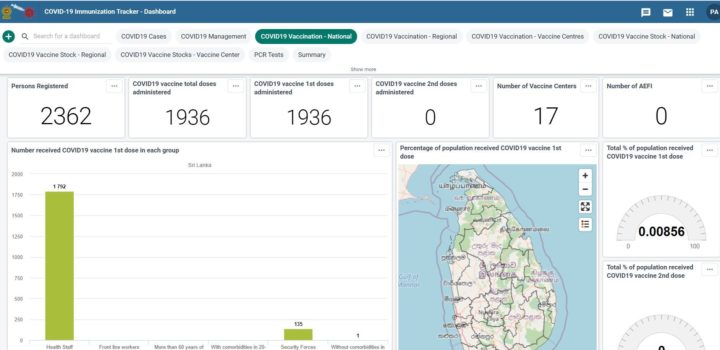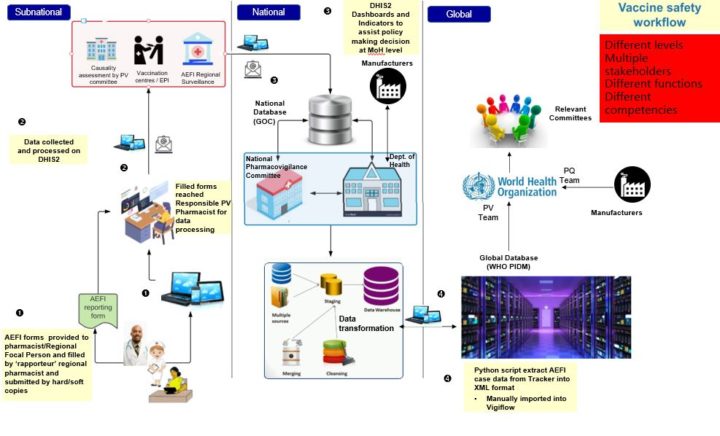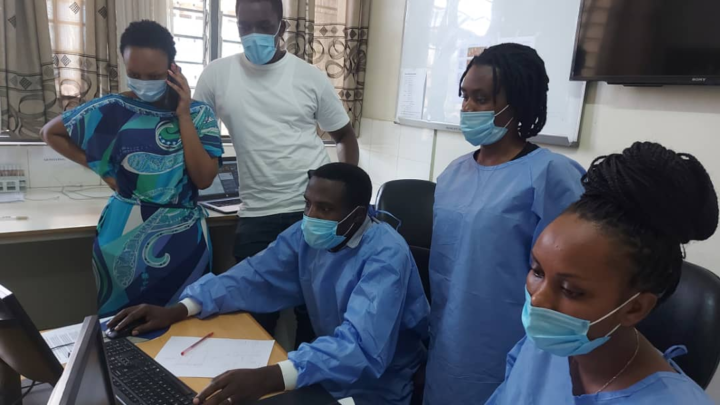Esta página ha sido traducida de manera automática y puede contener errores
Integración e interoperabilidad con DHIS2
DHIS2 admite la integración de diferentes fuentes de datos y aplicaciones informáticas en un sistema unificado de gestión de la información, así como la interoperabilidad basada en normas abiertas
Enlaces directos al contenido de la página
Visión general: Integración e interoperabilidad con DHIS2
El ecosistema sanitario digital incluye una variada selección de sistemas y herramientas para recopilar, almacenar y utilizar datos.
En muchos casos, estos sistemas tienen sus propias estructuras de datos y marcos de diseño, por lo que gran parte de la información recopilada con ellos se almacena en silos.
Esto dificulta que los Ministerios de Sanidad y otras organizaciones analicen sus datos en todos los programas y sectores, obstaculizando su capacidad para tomar decisiones basadas en datos.
Dos conceptos relacionados que pueden ayudar a afrontar este reto son la integración -el proceso de unificar varios sistemas de información diferentes para que funcionen como uno solo- y la interoperabilidad -la alineación entre sistemas independientes para que puedan compartir datos entre sí-.
HISP UiO apoya la integración y la interoperabilidad como prácticas que pueden ayudar a los países a alcanzar sus objetivos de fortalecer los sistemas de información de salud mediante un uso más eficaz de los datos.
Como tal, hemos diseñado DHIS2 como una plataforma que puede recibir y alojar datos de distintas fuentes y compartir datos con otros sistemas y mecanismos de información.
Esto ha conducido a la adopción de DHIS2 como almacén de datos en varios países, así como a integraciones con fines específicos entre DHIS2 y sistemas de información de logística, laboratorio, población y otros.
La red HISP también desarrolla la capacidad de los países para diseñar e implementar integraciones de sistemas, y participa en una serie de iniciativas destinadas a aumentar la interoperabilidad mediante el desarrollo y el apoyo de normas mundiales.
En esta página puedes encontrar información sobre integración e interoperabilidad con DHIS2, incluidos casos de uso comunes, herramientas disponibles y ejemplos del mundo real.
Para obtener información sobre la integración con FHIR, visita nuestra página web sobre DHIS2 y FHIR.
Para obtener orientación técnica sobre la implementación de proyectos de integración, consulta la documentación sobre integración de DHIS2 en el Portal del Desarrollador de DHIS2 y lee la sección Conceptos de Integración de la Guía de Implementación de DHIS2.
También puedes encontrar vídeos relacionados con la integración e interoperabilidad de DHIS2 en la lista de reproducción Integración de nuestro canal de YouTube.
Los principios de HISP: Diseño basado en contextos, necesidades, beneficios y objetivos locales
Gran parte de la información de esta página y de la documentación de DHIS2 trata de cómo DHIS2 apoya la integración y la interoperabilidad desde una perspectiva técnica.
Sin embargo, al abordar estos temas en el mundo real, es importante considerar por qué la integración podría ser apropiada en una situación determinada, y si los beneficios potenciales que podría aportar compensan los costes que conlleva, especialmente teniendo en cuenta la complejidad del trabajo de integración inicial y la necesidad de mantenimiento a lo largo del tiempo.
El enfoque de HISP respecto a la integración e interoperabilidad de DHIS2 se basa en los siguientes principios:
- Apoyar los objetivos de los países: En consonancia con nuestra misión histórica de más de 25 años, nuestro principio rector es actuar solidariamente con nuestros países socios y ayudarles a alcanzar sus objetivos.
- Identificar el valor para los usuarios: Los proyectos de integración deben aportar un valor claramente identificado a los usuarios finales / propietarios del sistema, a quienes también hay que consultar para determinar cuál es ese valor.
- Evalúa los costes frente a los beneficios: El valor aportado debe sopesarse con el coste.
La interoperabilidad suele ser cara de implementar, tanto en términos de trabajo de integración inicial como de funcionamiento y mantenimiento a largo plazo. - Centrarse en el uso de los datos, no en el software: Es más productivo iniciar los proyectos de interoperabilidad como debates internos entre departamentos, programas y secciones del Ministerio de Sanidad para determinar qué datos sería útil intercambiar, que como debates técnicos sobre qué sistemas de software podrían vincularse entre sí.
- Diseña los sistemas localmente: Lo ideal es que la arquitectura de los sistemas se haga en el país.
HISP UiO apoya el aumento de la capacidad del Ministerio de Sanidad y otros organismos para diseñar, construir y mantener sus propios sistemas basándose en el contexto local, en lugar de importar diseños abstractos de fuentes externas. - Participar en la colaboración global: HISP apoya y participa en OpenHIE y otros foros centrados en la interoperabilidad y la integración, que proporcionan valiosos debates sobre nuevas ideas, normas y enfoques.
- Normas mundiales para el intercambio de datos: Promover el uso significativo de normas globales de interoperabilidad como ADX y FHIR.
Casos de uso comunes de integración de DHIS2
Hay varias razones para integrar DHIS2 con otros sistemas informáticos, como combinar datos de diversas fuentes -como estadísticas sanitarias, datos logísticos o de laboratorio, información sobre recursos humanos- en una plataforma para realizar análisis conjuntos, combinar varios sistemas DHIS2 entre sí o incorporar datos a un HMIS DHIS2 procedentes de herramientas de recopilación externas.
Algunos casos comunes de uso de la integración de DHIS2 incluyen:
Múltiples sistemas DHIS2
La mayoría de los países tienen más de una instancia de DHIS2, por ejemplo para distintos programas sanitarios.
Su integración puede incluir la sincronización de unidades organizativas y elementos de datos entre sistemas, el intercambio de datos agregados, la introducción de datos del Rastreador en sistemas agregados y el intercambio de datos de pacientes.
Almacén de datos
DHIS2 se utiliza a menudo como almacén de datos integrado, combinando datos de diversas fuentes, como datos sanitarios, logísticos, de población y de recursos humanos, para facilitar el análisis transversal.
Datos logísticos
DHIS2 puede utilizarse para la logística como captura de datos de existencias de usuario final e integrarse con un sistema eLMIS ascendente para la gestión integral de la cadena de suministro y para apoyar el análisis de los cuellos de botella.
Datos de laboratorio
La integración con los sistemas de laboratorio facilita el intercambio de datos de pruebas de pacientes para apoyar la vigilancia de enfermedades y otros programas.
Datos sobre educación
El uso de DHIS2 como Sistema de Información de Gestión de la Educación (EMIS) es cada vez mayor, y los datos sobre educación pueden combinarse con los datos de los programas de salud para apoyar las campañas de inmunización y otras actividades.
Clima y salud
El caso de uso emergente para combinar datos sanitarios y climáticos en DHIS2 está allanando el camino para la integración de DHIS2 con sistemas climáticos para aportar datos meteorológicos y otros datos climáticos.
Una Salud
El uso de DHIS2 como plataforma «Una sola salud» incluye la integración de distintos tipos de datos de salud, incluidos los datos medioambientales y de animales, procedentes de múltiples fuentes, para tener una imagen completa de la salud de las personas, los animales y los ecosistemas.
Informes regionales
Las grandes organizaciones regionales e internacionales, como PEPFAR, WAHO y CARPHA, han integrado los sistemas DHIS2 para permitir el seguimiento y el análisis regionales.
Vinculación de las herramientas de recogida de datos
Una gran variedad de herramientas digitales de recogida de datos, como CommCare, OpenSRP y RapidPro, pueden integrarse con DHIS2.
Los datos que capturan estas herramientas fluyen hacia DHIS2, donde pueden utilizarse para el HMIS nacional, programas de vigilancia, encuestas, etc.
La lista de esta página incluye algunos ejemplos comunes.
Apoyo técnico básico de DHIS2 para la interoperabilidad
Mantener un soporte de interoperabilidad sólido y totalmente abierto para la plataforma DHIS2 es una prioridad para HISP UiO.
DHIS2 está diseñado para facilitar la interoperabilidad a nivel arquitectónico, y la red HISP ha desarrollado orientaciones y herramientas para apoyar la integración con DHIS2, con tecnologías adicionales en desarrollo.
API Web DHIS2
DHIS2 proporciona sólidas API totalmente abiertas y bien documentadas, que fomentan tanto el desarrollo de aplicaciones externas sobre DHIS2 como la integración con otras herramientas.
Se trata de un pilar fundamental, que no es habitual en otras plataformas de software, donde las API suelen estar limitadas o bloqueadas por barreras de pago.
Además, a partir de la versión 40 de DHIS2, la API de DHIS2 se describe formalmente en OpenAPI, lo que permite generar documentación, clientes en varios lenguajes de programación, herramientas de prueba y muchos otros casos de uso.
Modelo de datos flexible
El modelo de datos de DHIS2 permite esquemas heterogéneos de identificación/codificación, lo que permite a los implementadores asignar códigos a los objetos de DHIS2 que se correspondan con códigos de otros sistemas para facilitar la correspondencia de datos y metadatos.
Paquetes de metadatos normalizados
HISP UiO ha colaborado con la OMS y otros socios para desarrollar y publicar paquetes de metadatos estandarizados que incluyen definiciones de conjuntos de datos, indicadores y tableros basados en normas compartidas y abiertas.
App hub DHIS2
Con el App hub, DHIS2 proporciona una plataforma para que desarrolladores independientes compartan aplicaciones personalizadas que pueden descargarse e instalarse en cualquier sistema DHIS2.
Muchas de estas aplicaciones permiten la integración y el intercambio de datos.
Ejemplos de integración de DHIS2
Los artefactos de código que muestran las integraciones de DHIS2 están disponibles para su reutilización y adaptación en GitHub.
Herramientas de apoyo a las integraciones DHIS2
Exportador CIE-10/11
Exporta códigos CIE-10/11 como conjuntos de opciones DHIS2. Explorar en GitHub
Fachada de ESAVI a E2B
Servicio que convierte casos ESAVI de DHIS2 en ICSR de E2B. Explorar en GitHub
DHIS2-RapidPro
Una solución middleware independiente que integra DHIS2 con RapidPro, permitiendo sincronizar usuarios, transferir datos agregados y enviar recordatorios automatizados. Ver vídeoExploraren Github
DHIS2 Jave SDK
Una biblioteca Java compatible con Android que te permite escribir código de forma rápida y precisa basándote en la terminología DHIS2. Explorar en Github
Componente Camel DHIS2
Un módulo Apache Camel que permite a los desarrolladores integrar aplicaciones middleware Camel con DHIS2. Explorar en GitHub
Arquetipo Camel DHIS2
Crea rápidamente una aplicación con Apache Camel para ayudarte a empezar con tu proyecto de software de integración de DHIS2. Explorar en GitHub
Sistemas externos que soportan la integración con DHIS2
Un gran número de sistemas y plataformas de software admiten la integración con DHIS2.
A continuación, puedes encontrar una lista no exhaustiva que se divide en middleware de integración, sistemas y plataformas genéricos, y sistemas específicos de dominio.
Puedes encontrar más información sobre estos sistemas a través de los enlaces a sus sitios web incluidos más abajo y en la Guía de Bienes Globales del Cuadrado Digital.
Middleware de integración
Existe una selección de sistemas de middleware para facilitar la integración con DHIS2:
Sistemas y plataformas generales
Varios sistemas y plataformas de uso general pueden integrarse con DHIS2:

CommCare
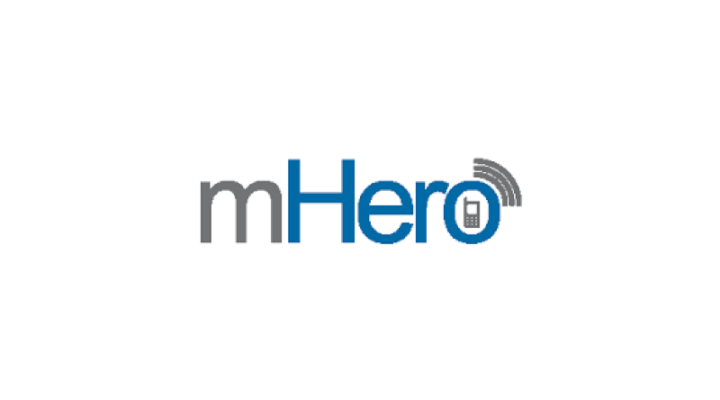
mHero

OpenSRP

RapidPro

Tamanu
Sistemas específicos de dominio
La siguiente lista incluye ejemplos de sistemas y aplicaciones específicos del ámbito que se han integrado con DHIS2:

Equiparación de establecimientos
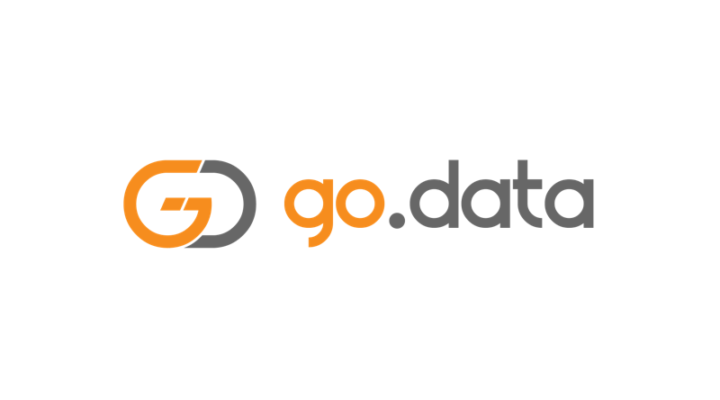
Ir.Datos

iHRIS
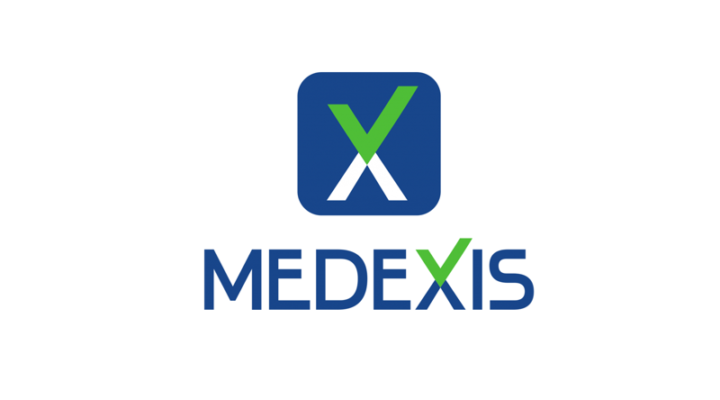
Medexis

mSuministro

OpenCRVS

OpenLMIS

OpenBoxes

Simprints (en curso)

Vigibase

LabBook
Historias de impacto: Aportar valor a los usuarios del país mediante la integración
Lee las historias que aparecen a continuación para ver ejemplos de cómo la integración satisfactoria entre DHIS2 y otros sistemas ha aportado valor a los usuarios y a los gobiernos al facilitar el uso y el análisis de los datos.
Debatir los proyectos de integración con el equipo central y la comunidad global
La Comunidad de Práctica (CoP) de DHIS2 es el principal foro de debate y apoyo de DHIS2.
Si surgen preguntas o retos al integrar DHIS2 con otros sistemas de software, la CoP es un lugar estupendo para hacer preguntas y obtener apoyo de la comunidad internacional de expertos en DHIS2, incluidos los miembros del equipo central de interoperabilidad de DHIS2. Únete al debate También puedes ponerte en contacto con el Grupo HISP de tu región para obtener apoyo en proyectos de integración a nivel nacional, o enviar un correo electrónico directamente al equipo de interoperabilidad de DHIS2 a: integration@dhis2.org
Colaboración mundial en materia de interoperabilidad
HISP UiO trabaja activamente por el objetivo de una mayor interoperabilidad de DHIS2 para apoyar un ecosistema diverso de herramientas sanitarias digitales.
Somos miembros de la comunidad del Sistema de Gestión de Información de Salud (HMIS ) de OpenHIE, que se organizó para liderar el desarrollo y despliegue de tecnologías de código abierto para gestionar mejor la información sanitaria y promover mejores resultados sanitarios.
También somos miembros activos de Integrating the Healthcare Enterprise (IHE), donde hemos participado en comités de estándares, y hemos intervenido directamente en la autoría de varios perfiles IHE relacionados con el intercambio de datos de salud.
HISP UiO también colabora con la Organización Mundial de la Salud en el conjunto de herramientas de datos de salud de la OMS, cuyo objetivo es reforzar el uso de datos a nivel nacional e internacional mediante la promoción de buenas prácticas y normas mundiales.
Además de con la OMS, colaboramos regularmente con organismos de la ONU como UNICEF y la FAO, con afiliados de HL7 y con PATH para seguir avanzando en la interoperabilidad de DHIS2 con otros sistemas sanitarios.
A través del compromiso con estas organizaciones y otras, seguimos trabajando para desarrollar y difundir normas globales, como FHIR.
El equipo de DHIS2 también colabora con homólogos de otros sistemas de información de salud y aplicaciones para desarrollar enfoques genéricos de integración entre plataformas.
Además, el equipo publica listas de códigos de terminología común compatibles con DHIS2 que están alineadas con SNOMED GPS, LOINC, CIE-10 y otras normas comunes.
